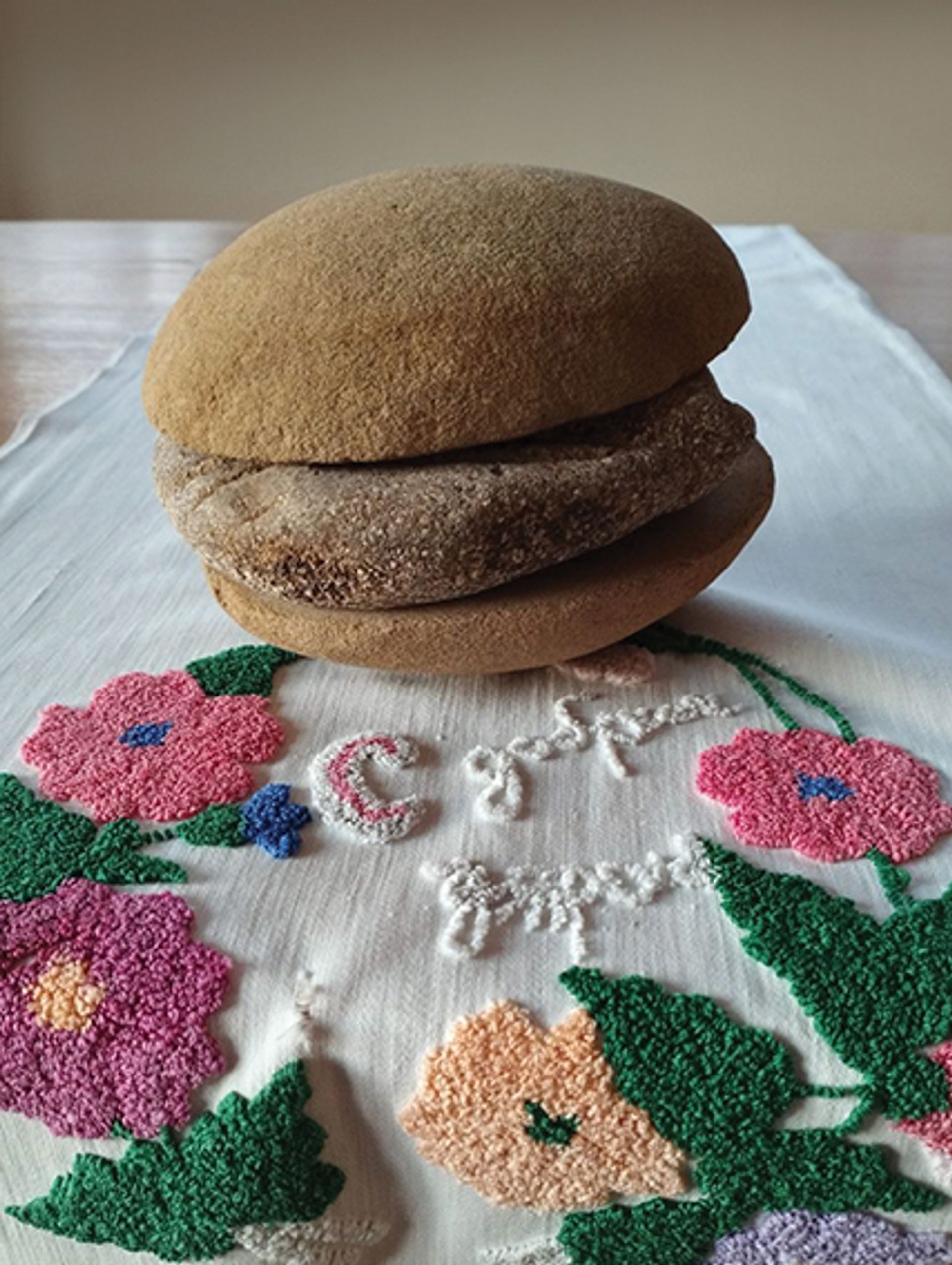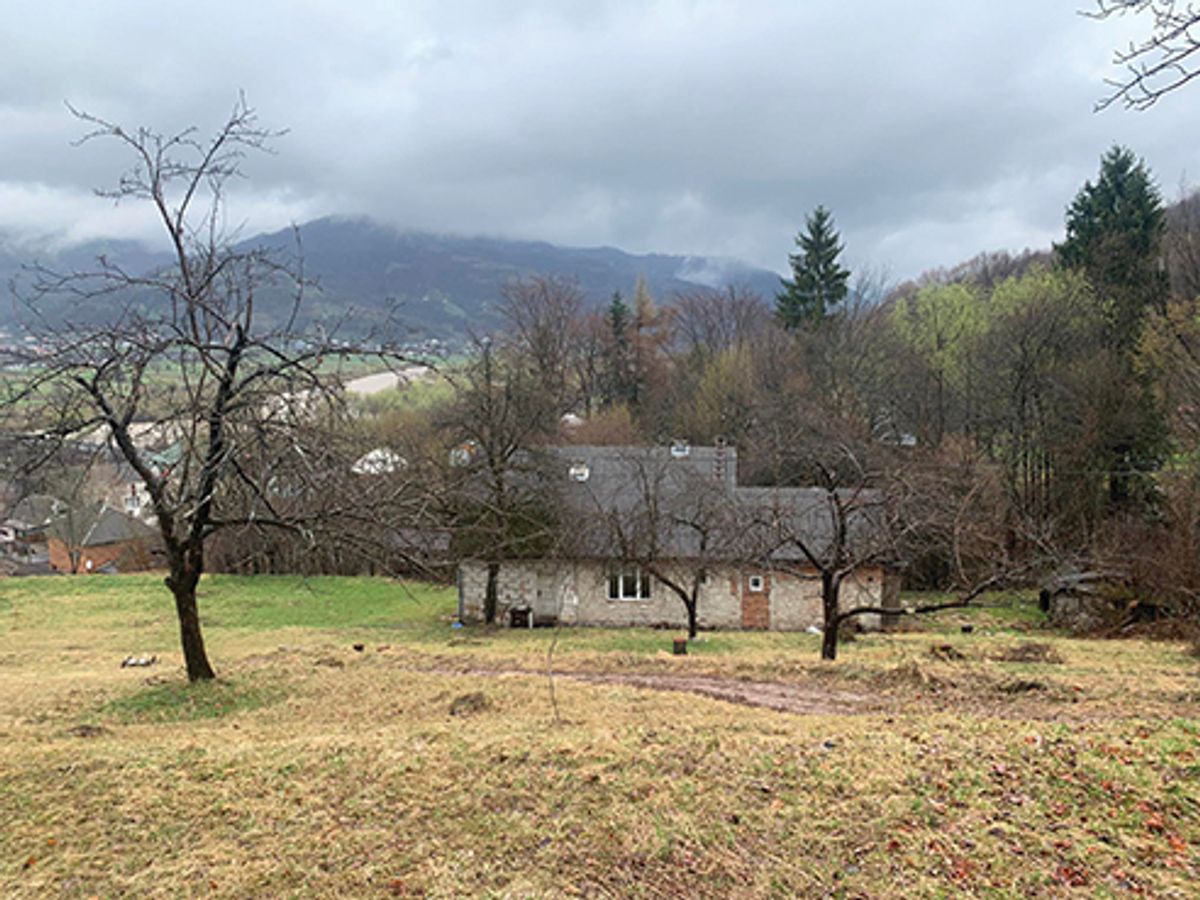After Russia invaded Ukraine on 24 February and began to bombard the country’s eastern regions, millions of Ukrainians fled westward. Among them were hundreds of artists who have taken shelter in the scenic Transcarpathian mountain region known as Zakarpattia, where art residencies have now become a refuge for many.
Alona Karavai, a cultural manager who fled Donetsk in 2014 after it was taken over by pro-Russian separatists and founded a gallery, Asortymentna Kimnata, in Ivano-Frankivsk in the Carpathian foothills, set up a residency with the Kyiv artist and curator Lesya Khomenko as soon as the war began.
Called Working Room, it was conceived as a residency/working laboratory. Artists including Sasha Kurmaz, Kateryna Aleinik and Nikita Kadan are based in Ivano-Frankivsk, while Eugene Samborsky, Yarema Malashchuk and others are living collectively in mountain houses, and Zhanna Kadyrova and Denis Ruban are among several participating remotely.
Colleagues from abroad sent donations of €300 to €500 that covered the artists’ immediate needs and set up the residencies. “The first two weeks were full of solidarity [from individuals] when bigger organisations did not know what to do,” Karavai says.
The residency is meant as a safe space; it is “not results oriented”, she adds. Every Thursday, a collective reflection session is held, bringing the dispersed participants together via Zoom.
“It goes deeper into reflections about topics such as dehumanisation and how it works right now,” she says. “War is making them address critically the anthropocentric idea that the human is at the centre of the universe, when the universe is much more. Some are addressing the subject of animals in the war region, others the soil mineralisation process and the impact of killed human bodies on it.”
Kadyrova and Ruban fled from Kyiv to the village of Berezovo where they have already held an exhibition called Palianytsia (bread in Ukrainian). It features bread sculptures which they carved out of river stone found near their first stop as refugees in the Transcarpathian region. Local villagers were invited to the opening.

Zhanna Kadyrova, Palianytsia (2022) © Ivan Sautkin
“[It made me] believe in art again; there were people who had never seen contemporary art before,” Kadyrova said as she was preparing to exhibit the palianytsia stones in Venice. Galleria Continua, which represents the artist, will donate all proceeds to Ukrainian relief, as she has.
Within a month of creating them, Kadyrova was preparing her palianytsias for exhibitions in Bucharest, Berlin, Venice, and in Japan at the Echigo-
Tsumari Art Triennale 2022, with all the logistical difficulties this may have entailed.
For a future exhibition, Kadyrova is planning to present embroidered works by a 90-year-old village woman, and paintings by her nine-year-old granddaughter—one of whose works she has already bought—as well as those by a priest relative.
Karavai noticed during residencies before the war that artists expected “a little bit more interaction with the traditional culture” of the region. But then, as now, “they were so overwhelmed with nature that they started to interact more with it,” she says.
“The Carpathian mountains are a great space [for the artists to connect] with themselves and nature.”


